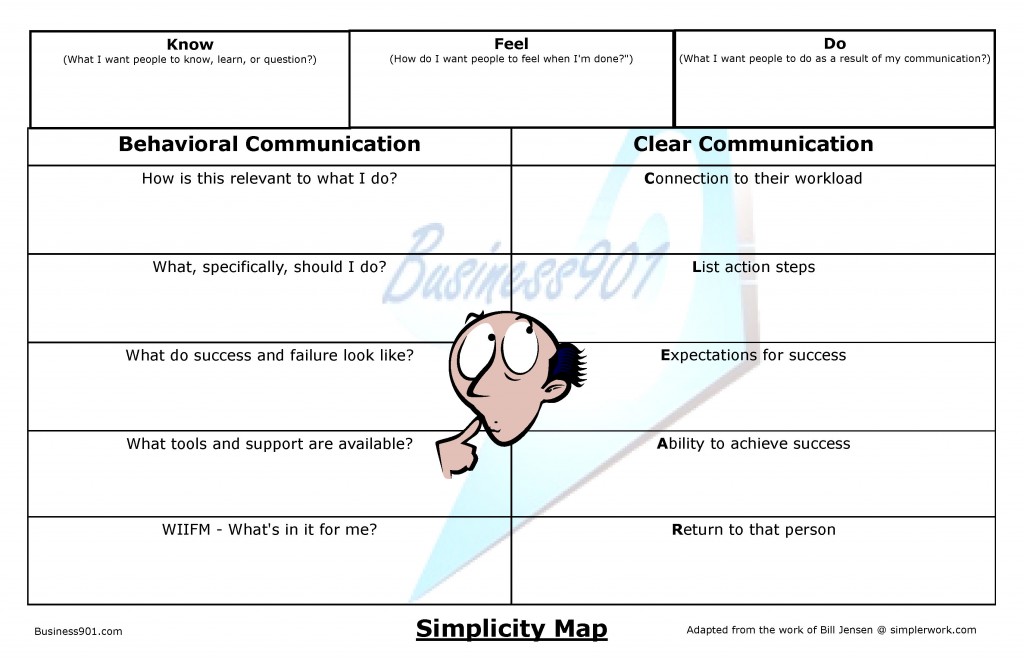Cutting through Clutter and Competing on Clarity
When I venture out to improve the sales and marketing process, these are core ingredients that I need to address for a successful outcome. The primary source for this information is from the book and handbook of Bill Jensen, Simplicity: The New Competitive Advantage in a World of More, Better, Faster and The Simplicity Survival Handbook: 32 Ways To Do Less And Accomplish More. I recommend the handbook, but the original book can be purchased at a bargain price, so get both.
The Simplicity is not in completing the map. The Simplicity is in understanding the customer and delivering each and every time with relevant communication that attaches to the customer work (CLEAR), their needs (Behavioral) and with desired outcomes (Know, Feel, Do). Do not complete this from your point of view but from the point of view of the customer. Here is my attempt at a Simplicity Persona.
 I would also recommend reviewing
I would also recommend reviewing
If the Know, Feel, Do looks familiar to you, it is what Dan Pink discussed in his recent book, To Sell Is Human: The Surprising Truth About Moving Others. This is the part that I probably use more than any other tool. It is how I view conversations, creating scripts, and even writing blog posts.
Breaking down the step further:
1. Know, Feel, Do
- Know: “What’s the one thing I want people to know, understand, learn, or question?”
- Feel: “How do I want people to feel when I’m done?”
- Do: “What do I want people to do as a direct result of my communication?”
2. Behavioral Communication: This is the anatomy of a decision. When people choose between being compliant, acting with full commitment or doing nothing at all, these are the five questions they think about, and want answered:
- How is this relevant to what I do?
- What, specifically, should I do?
- What do success and failure look like?
- What tools and support are available?
- WIIFM – What’s in it for me?
3. CLEAR Communication: These are the answers to each behavioral question. If you wish to compete on clarity, and speed up implementation, you must provide this information, or create ways for people to figure it out themselves.
- Connection to their workload
- List action steps
- Expectations for success
- Ability to achieve success
- Return to that person
In typical process based systems, we focus on deliverables. I equate that to the typical funnel thinking displayed in a sales and marketing context. We focus on website hits, number of sales calls, open and conversion rates, etc. and our favorite cycle time. All of these are measurable and important.
When we introduce a new product/service changed to a customer, we are asking them to change their behavior. Change requires a shift in behavior for someone and maybe the entire organization. Organizations are also more networked with decision making becoming more decentralized. We are having difficult time identifying and addressing all the influencers in the decision process. We ask are salespeople typically by themselves to manage this. However, how well is it understood by the rest of our supporting cast and supported? Are we identifying behaviors and the communication required to change them?
Lean Sales and Marketing: Learn about using CAP-Do
